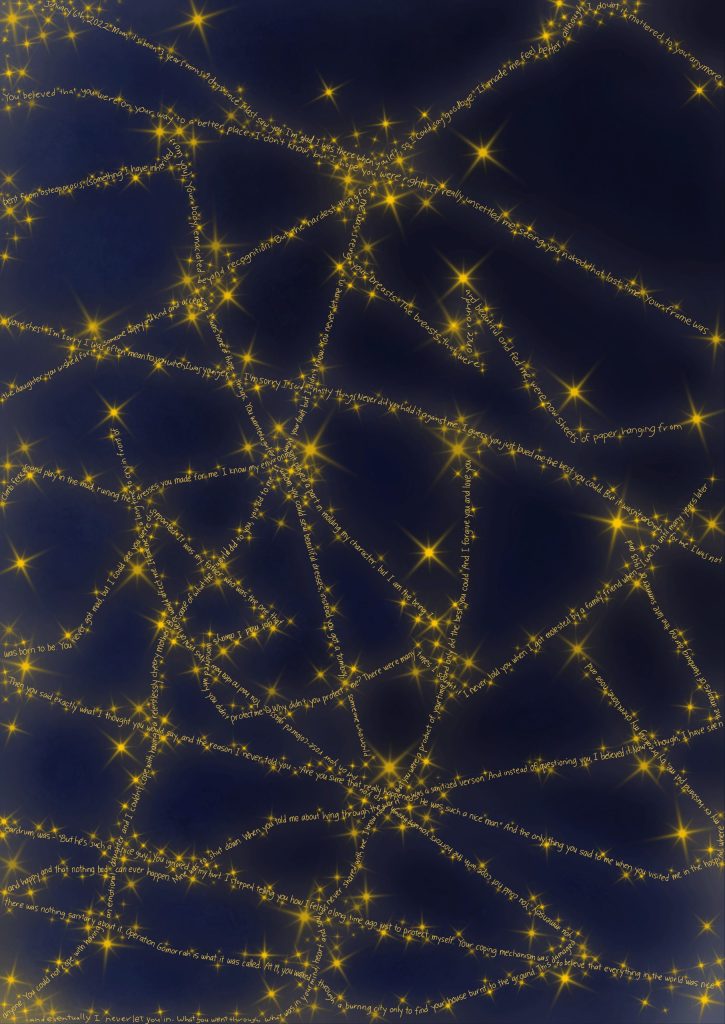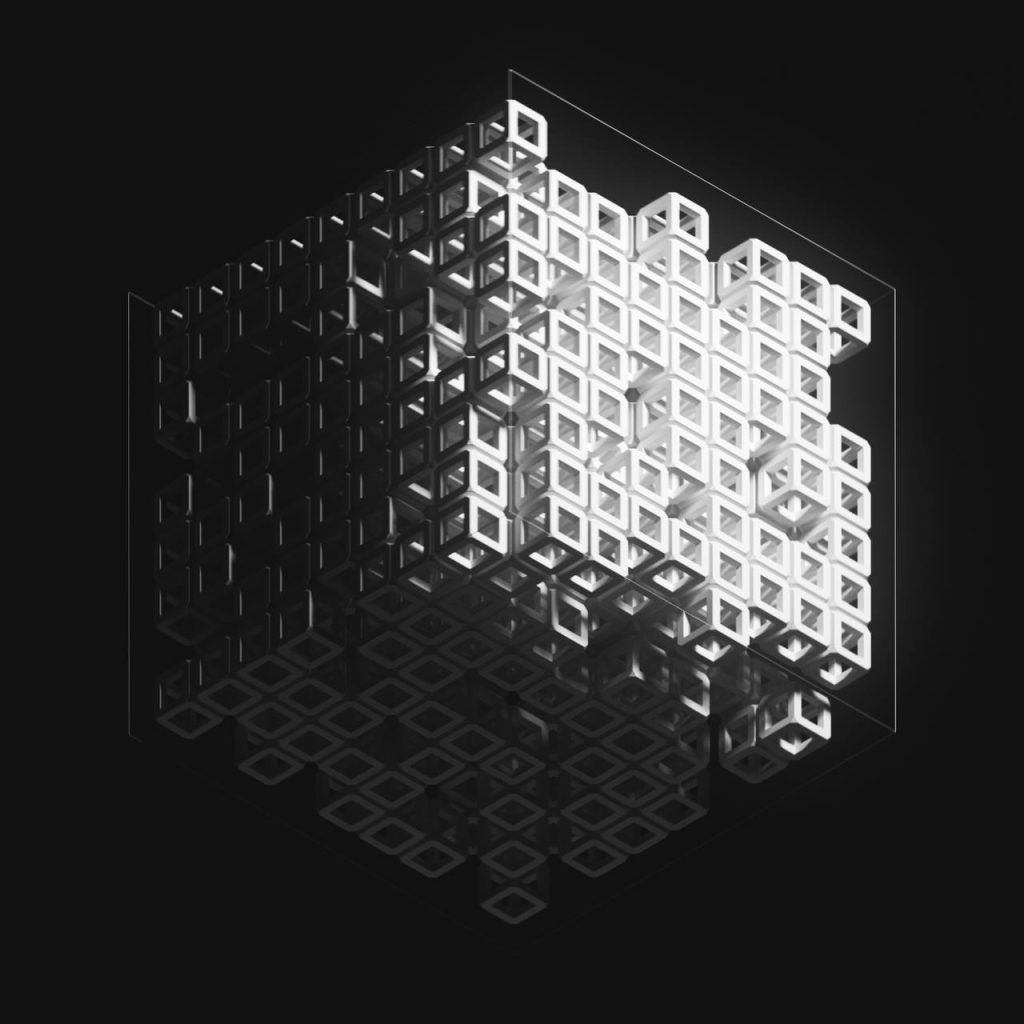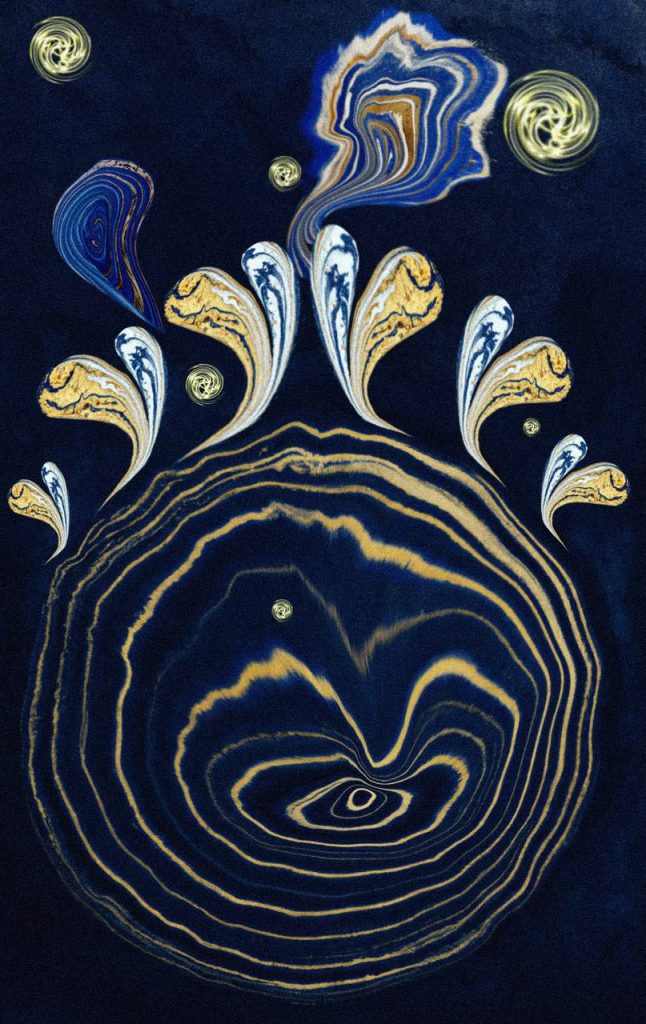INA DAO’s Visual Conversation (created by 25 INA DAO members)
Artists and Digital Assets: Pioneering Web3 Technologies in the Hands of Artists
In recent years, the art world has undergone a profound transformation, not only revolutionizing the way we buy and sell art but also reshaping our perception of artists and the very essence of their craft. At the core of this revolution lies blockchain technology and the enigmatic Non-Fungible Tokens (NFTs). While some may view NFTs as a fleeting trend or a mere buzzword of the digital age, a deeper exploration reveals a profound insight into the future of the creative economy, a dynamic sector valued at a staggering 2.2 trillion dollars by the United Nations.
In the world of art, where the creation and distribution of digital works have historically been plagued by challenges, blockchain technology has emerged as a potential game-changer. This decentralized digital ledger, notably recognized for powering Ethereum, has ushered in a new era in which artists can assert ownership and control over their creations. Blockchain’s mission to establish tamper-proof and transparent ledgers offers a secure platform for artists to certify the authenticity of their digital artworks. For an industry that has long grappled with issues of provenance and piracy, this development is nothing short of revolutionary. Artists can now exhale, knowing that the integrity of their work is safeguarded. Nevertheless, the pressing need to reshape the world’s perception of artists and their worth endures.
Enter NFTs, a crucial representation of this blockchain-powered revolution, where artists are pushing the boundaries of their demand for recognition and value. In practical terms, NFTs are digital certificates of authenticity, each bearing a unique and irreplaceable imprint. These tokens signify ownership of specific digital assets, whether they are artworks, music tracks, physical objects, or even tweets. What distinguishes NFTs is their capacity to be bought, sold, and traded on blockchain-based marketplaces. This newfound liquidity of digital assets opens an entirely new realm of possibilities for artists, granting them the agency to determine the sale, protection, and even the enduring value of their work.
Consider the case of Mike Winkelmann, better known as “Beeple.” In March 2021, Beeple’s digital collage, “Everydays: The First 5000 Days,” fetched a staggering $69 million at a Christie’s auction. This was more than a sale; it was a proclamation. These transactions signified the emergence of digital art as a highly lucrative asset that the art market, for better or worse, could acknowledge and trade. While it might have appeared as a flashy statement amidst a bloated art market, it catalyzed a ripple effect worth acknowledging.

Dear Mom by Gemini Rising
It heralded the arrival of digital art as a legitimate and lucrative form of artistic expression. Or, a new way for the art market to exploit a new trend.
Yet, Beeple’s narrative is just one instance of artists leveraging NFTs to break free from the traditional constraints of the art world. No longer bound by galleries or intermediaries, artists are now empowered to directly engage with their audiences and monetize their creations on their terms. This newfound autonomy has the potential to be not only empowering in the long term but also economically transformative, both for artists and the market itself.
Tabea, the co-founder of Muti DAO, a cultural producer, and a Web3 educator, is at the forefront of exploring how blockchain can support artists. Speaking to us from Portugal, she shared her community’s approach to training artists to work with digital assets: “We created physical NFTs and tickets with the blockchain. It was fantastic to witness how artists began to comprehend the value of this technology. By including royalties and revenue splits, we eliminated their concerns about payments and follow-ups, ensuring they received their earnings automatically. It was an effective way to demonstrate that blockchain and NFTs can indeed be applied in the physical world.”

NFT by Pak
However, what truly underscores the significance of NFTs is how they have elevated artists who were previously overlooked or marginalized in the art market. Figures like Pak, a South Korean artist who embraced the digital realm, or Pranksy, an anonymous collector who became an influential presence in the NFT space, have risen to prominence through NFTs. These artists and collectors, often considered outsiders in the traditional art world, have found a thriving community and economic opportunities in the digital realm.
Moreover, women artists from around the world have made significant strides in leveraging digital assets through NFTs. Following Beeple’s groundbreaking sale, accomplished female artists like Krista Kim have achieved remarkable success.
Her digital artwork “Mars House” sold for over $500,000, and in the world of CryptoPunks, many of the most valuable NFTs were created by female team members. Notably, the Russian feminist punk band Pussy Riot collaborated with Trippy Labs and PleasrDAO to establish Ukraine DAO, which recently raised $7.1 million through its NFTs to support Ukraine. This highlights how the NFT movement has opened doors for artists from diverse backgrounds and genres, transcending traditional art market boundaries.
When we asked Klara Kopi, a multi-genre artist based in Brazil, and council member of INA DAO, if she felt that NFTs and the digital art space provide a more inclusive and equitable platform for her and other women artists, she shared, “The technology world still is very dominated by men, but we can see initiatives throughout the web3 creating spaces and opportunities for women, such as INA DAO, which I’m a part of. In this space, I have seen and met a lot of amazing women creating, and that has been really inspiring, but we still have a long way until there are as many women in the web3 world as there are men. I have faith that bit by bit we’re bridging the gap for women.”
So, it’s not just about artists creating NFT art. Some ingenious artists have harnessed NFTs and digital assets to market their existing works, challenging the norms of the traditional art market. Renowned musicians like Kings of Leon released their latest album as NFTs, granting fans access to exclusive content and experiences. The on-chain label DAO Records even secured its first Grammy nomination for Arturo Sandoval and Best Latin Jazz Album in 2022. Esteemed artists like Sandoval are exploring digital assets as a means to connect with new audiences. Even hip-hop icon Snoop Dogg has shifted one of his labels entirely to NFTs and digital assets, as a protest against the opacity of streaming platforms.

Cycles by Klara Kopi
Blockchain technology is also transforming the relationship between artists and their audiences. Beyond the confines of social media, where fans can follow and engage solely through comments, artists now have the ability to build communities of passionate supporters. Tabea shared her insights on the convergence of community and blockchain, stating, “I believe that having a community and collaborations are equally, if not more important, in the digital art market. NFT projects and successes rely on hype, excitement, visibility, and a community that aligns with the artist’s vision for investment. While individual artists can thrive in this space, the true strength lies in connecting and creating communities, exchanging knowledge, and collectively envisioning the future.”
Yet, amid skepticism, one fundamental truth prevails: NFTs symbolize a broader shift in the creative economy, allowing artists to take control of their careers and revenue streams, unburdened by traditional gatekeepers. This trend extends beyond art, infiltrating music, literature, and various creative domains. The resilience of the creative economy is more than a mere buzzword; it’s an evolving reality. As artists worldwide harness the potential of Web3 technologies and NFTs to liberate themselves from the constraints of the past, the creative economy emerges as a formidable force. It’s no longer just about the artwork; it’s about the artists themselves, stepping confidently into the spotlight of their own economic destinies.
Kopi framed this point when she told us, “One of the most interesting things is being able to collect royalties from your pieces forever and also having your own smart contract and your own marketplace like we have on Mintbase. You can have your own gallery on the metaverse for your art, without depending on gatekeepers to create a space for you. Someone can see your art with VR glasses and you can also enhance the experience with AR for anyone with a cellphone. The possibilities are amazing, endless and we have barely scratched the surface. These are amazing times for creatives!”

